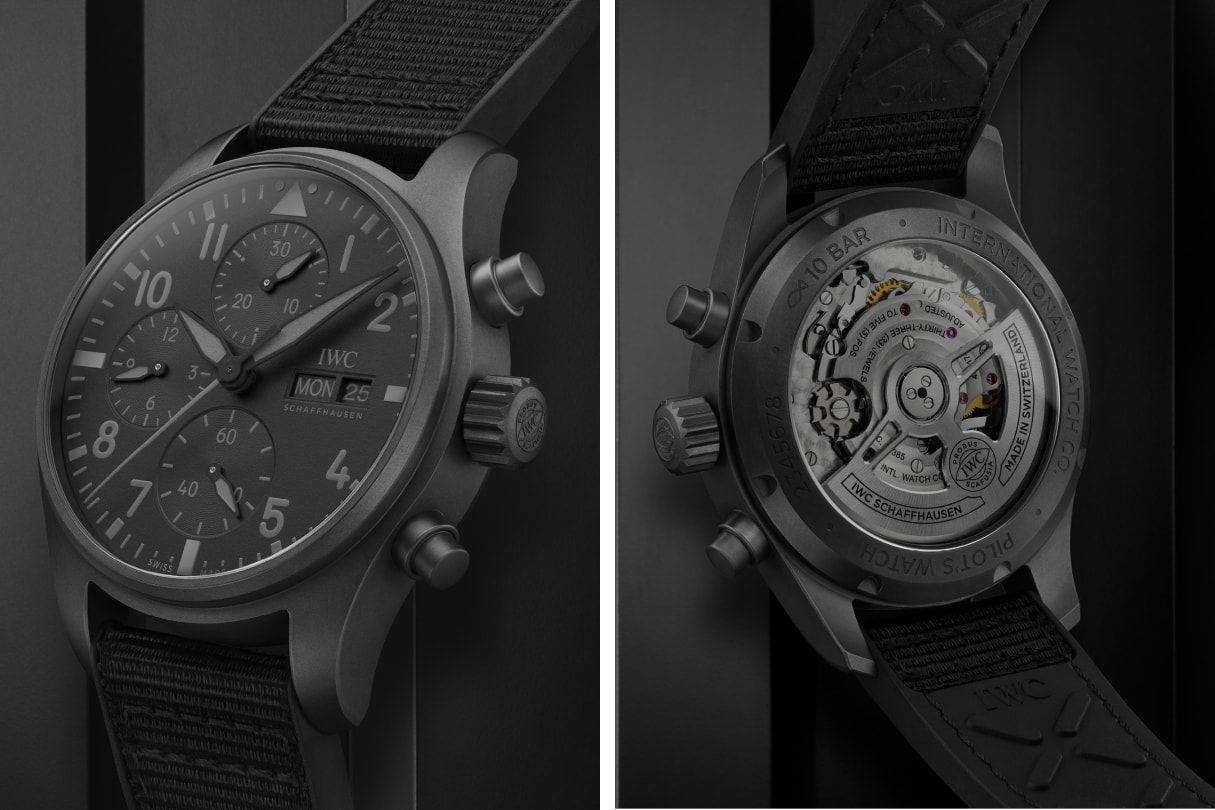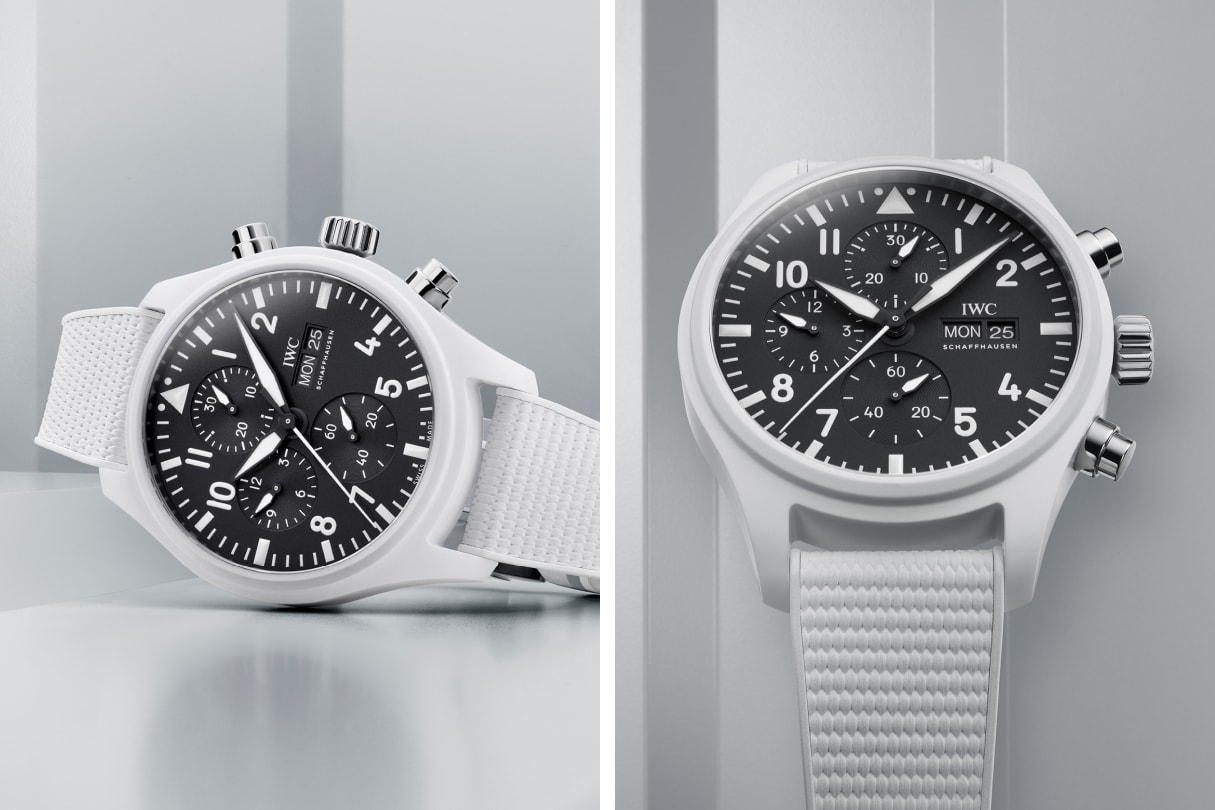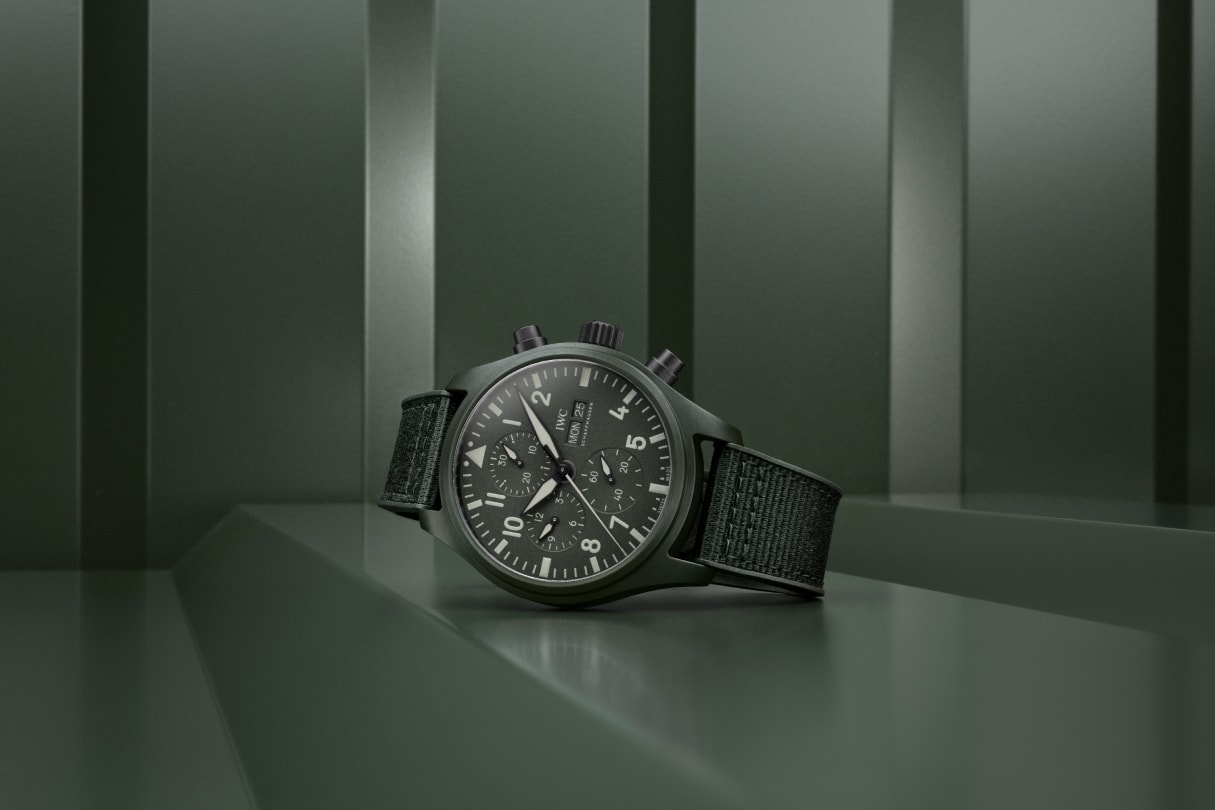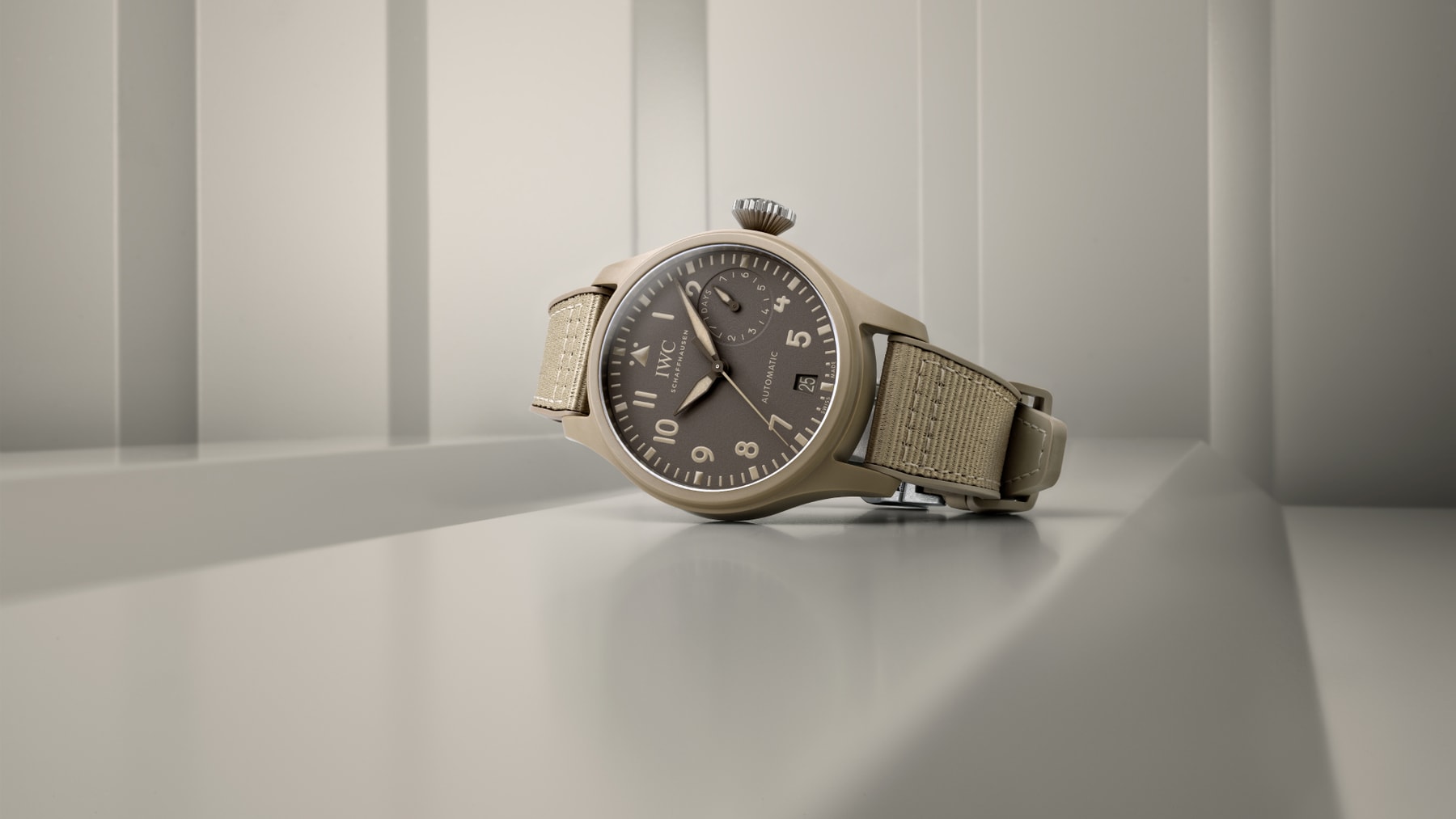

It’s been decades since the only choice when buying a new watch was between a case of stainless steel or a precious metal such as gold. Advanced materials trickling down from high tech or high performance fields such as aviation and motorsports have become a driving factor when it comes to selecting a new watch. Case materials offer not only practical benefits, but also come with their own distinct aesthetic properties too. Virtually ubiquitous in 2022, lightweight titanium is hypoallergenic and often more comfortable to wear on the wrist than stainless steel, while ceramic is scratch-resistant. “Advanced materials offer many benefits, especially in the context of the luxury industry,” says Dr. Lorenz Brunner, Department Manager for Research & Innovation at IWC. “Consumers are always looking for innovations. One key advantage of high-tech materials is lightness. Stainless steel and gold are relatively heavy. Titanium, ceramics and Ceratanium are lightweight materials that offer high wearing comfort. Equally important are the aesthetics. Ceramics, for example, has a smooth surface that is also pleasant to touch.”
IWC Schaffhausen has been pioneering in its work with both materials since the 1970s, when the company began experimenting with ways of increasing the scratch-resistance of stainless steel by hardening it with tungsten. It was IWC’s iconic collaboration with Porsche Design that brought titanium to the watch brand’s attention and, in 1980, IWC unveiled the Porsche Design by IWC Titanium Chronograph, the world’s first watch with titanium case and bracelet. Then, six years later, IWC would produce the IWC Da Vinci Perpetual Calendar, the world’s first watch with a case made of black zirconium oxide ceramic. In 2017, after five years of development, IWC revealed its hybrid of the two, Ceratanium, a unique Titanium alloy that takes on the properties of ceramic when exposed to high temperatures.
Ceratanium was the result of IWC’s engineers looking for a material to produce completely black watches without the need for a coating process such as physical vapour deposition (PVD), which can chip after an impact. The manufacturing process begins with a titanium alloy smelted specifically for the IWC. The components including case, crown, buckles and pushers are machined and finished to their final dimensions, which in the case of the 2022 IWC Pilot’s Watch Chronograph 41 Top Gun Ceratanium, involves sandblasting for an irregular, matte finish. The components are then kiln-fired at high temperature, which causes oxygen to diffuse into the material resulting in a “phase transformation,”, giving the surface of the material the same properties as hard-wearing, scratch-resistant ceramic and creating its distinctive matte black color.
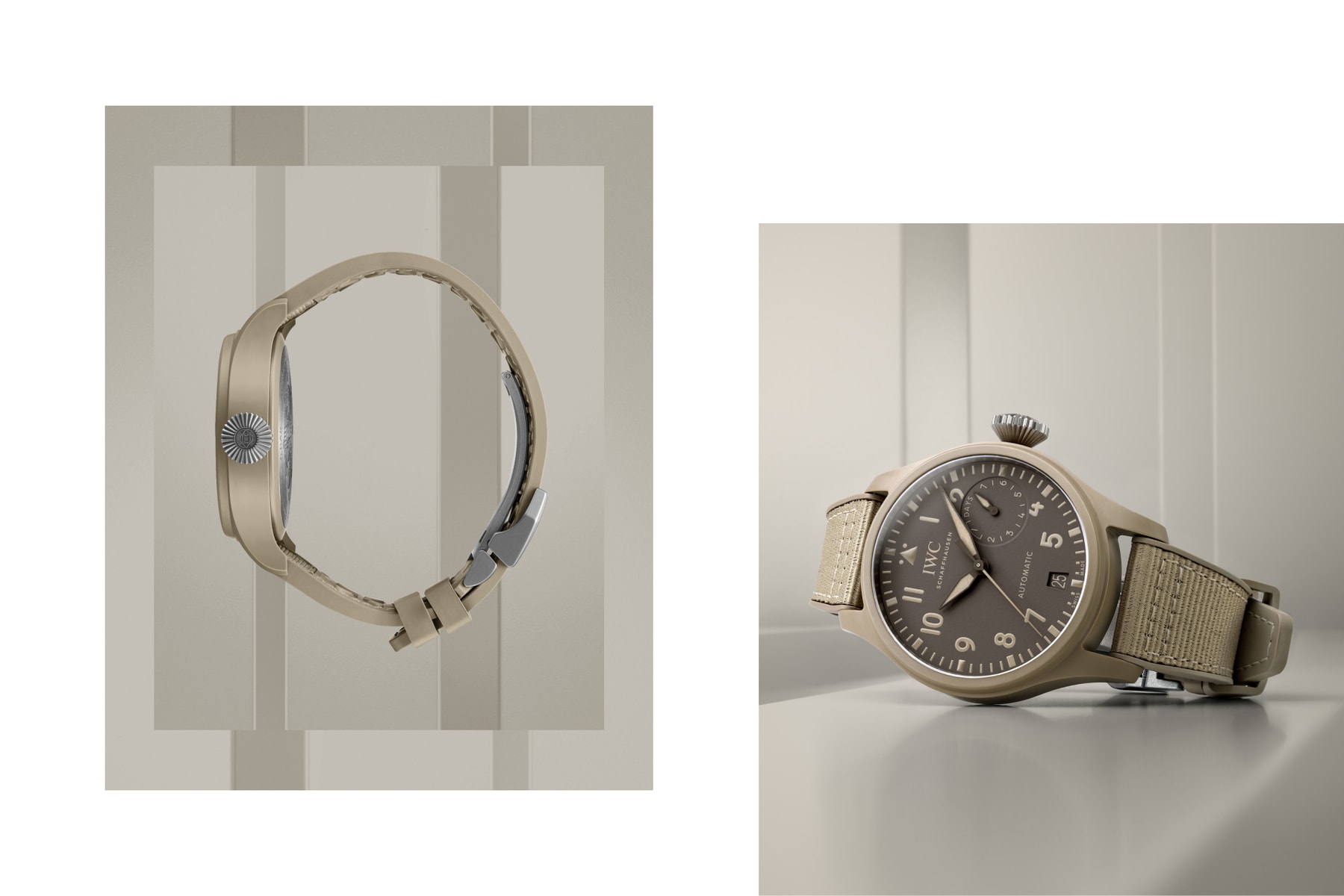
The fact that each component is fully formed and finished as titanium before its transformation in the kiln, means that even small auxiliary case components such as crown, pushers and buckles can be produced in Ceratanium, something which is near impossible with ceramic, due to the shrinkage that occurs during its manufacturing and the difficulty machining the material. Like the three other watches in IWC’s 2022 line-up of Pilot’s Watches, the IWC Chronograph 41 Top Gun Ceratanium has been given an official Pantone color reference, fixing Ceratanium’s unique shade in stone as “IWC Ceratanium”.
Ceratanium debuted in 2017 with the IWC Aquatimer Perpetual Calendar Digital Date-Month Edition and has since been used several times in the IWC Pilot’s Watch collection. IWC’s ability to manufacture intricate components using Ceratanium was once again illustrated last year by the IWC Big Pilot’s Watch Perpetual Calendar Top Gun Ceratanium, which became the world’s first watch with a bracelet entirely made of Ceratanium.



